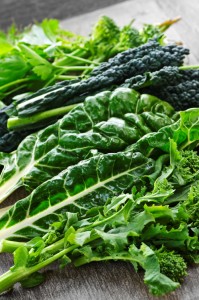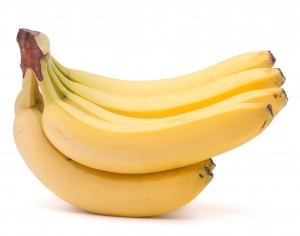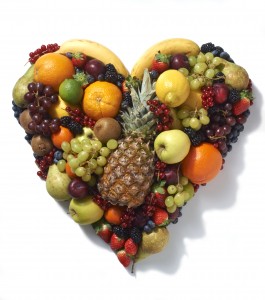We’ve all heard about how we are what we eat. For those of us that grew up eating a SAD diet (that is, the Standard American Diet), the switch to a more health-conscious and intentional approach to food brings all kinds of benefits. Living healthy can help you to live happy.
And not just in the obvious ways. Switching to a plant-based, raw lifestyle centered around whole foods brings all sorts of health benefits, and wanting to be physically fit or to lose weight are often the reason people make health-conscious choices. Being and feeling healthier is likely to make you feel pretty happy. But it turns out that the foods that we eat can actually have a much more direct impact on your mood.
Most of us have probably noticed that eating lots of refined sugars and foods heavy in unhealthy fats can make you feel kinda down. But there’s all kinds of foods that can have the exact opposite effect: boosting your mood, making you feel happier and more energetic, and even helping to fight off feelings of depression or anxiety. So let’s talk about foods that can help you be happy as can be.
Chocolate!
 No surprise here! I bet y’all we’re thinking chocolate before you made it through reading the headline. We all know that chocolate makes us happy. Well as it turns out, there’s some science behind that wonderful fact.
No surprise here! I bet y’all we’re thinking chocolate before you made it through reading the headline. We all know that chocolate makes us happy. Well as it turns out, there’s some science behind that wonderful fact.
Now of course, by ‘chocolate’, we’re talking about real chocolate. That’s the stuff that comes from cacao beans, not from corn syrup. Real chocolate is packed full of benefits.
For example, chocolate contains anandamide. Anandamide, which takes its name from the Sanskrit term for bliss and joy, is a neurotransmitter. In fact, it’s a cannabinoid neurotransmitter — not terribly unlike those found in cannabis (from whence they get their name). But anandamide is no drug: cannabinoids and cannabinoid receptors are an essential part of our nervous system.
One of the functions of anandamide is to regulate our eating habits. Anandamide acts as a sort of reward mechanism, to help keep us motivated by rewarding us with pleasure. Not only does cacao contain anandamide, but scientists have also found a couple other compounds that mimic anandamide.
And that’s not all chocolate brings to the table. Chocolate just really wants us to be happy. Chocolate is also an antioxidant, and contains everyone’s favorite amino acid, tryptophan. Raw chocolate bars, cacao nibs, and cacao powder are all great ways to get the benefit of this super awesome super food.
Chocolate possesses so many mood-boosting qualities you’d almost think it was a conspiracy. But cacao isn’t the only happy food out there.
Tryptophan Keeps The Happy Juices Flowing
This amino acid isn’t only in chocolate. Most people actually associate it with turkey, and with the general feeling of lethargy that tends to follow a big Thanksgiving feast. But as it turns out, tryptophan is found in most protein-rich foods, and is no more prevalent in turkey than in other poultry. Which means it probably isn’t the tryptophan that’s making your family sleepy: it’s probably the implausible amount of food they just ate.
Tryptophan is important because it is a precursor to serotonin, the neurotransmitter famously associated with happiness and feelings of well-being. In the body, tryptophan is turned first into 5-HTP, then into serotonin, where it plays an integral role in our central nervous system, our digestive system, and in our blood. It’s pretty important.
The other thing (aside from the thing about turkeys) which people think about tryptophan is that it’s hard to get it from plant sources. This also isn’t true. People are quite confused about tryptophan.
This essential amino acid can be found in all sorts of foods, and that’s something to be happy about. Some of the best sources for a raw lifestyle include:
[ingredients title=”Foods Containing Tryptophan”]- Chocolate (you know that already!)
- Sesame Seeds
- Sunflower Seeds
- Soybeans
- Chickpeas
- Quinoa
- Bananas
Keep these tryptophan-tastic foods in your diet and keep that serotonin happy juice flowing.
Be Happy with B Vitamins
I’ve already written about the importance of B12 and how to get it in you. B12 is known to help prevent a variety of mental disorders including dementia and memory loss. It also seems that B12 and other B vitamins such as folate can act as anti-depressants and mood-regulators.
While you’re well-advised to eat fortified foods or take supplements to get your B12 if you aren’t eating meat, folate and the other member of the B team can be easily found in whole plant foods. (Another benefit of eating raw food is that folate is damaged by high heat).
 Look to the green leafies for folate. Spinach, kale, Brussels sprouts and asparagus are fine examples. It can also be found in fruits, nuts, and grains. Essentially, all of the B vitamins (except B12!) should be amply provided for in a plant-based whole food diet.
Look to the green leafies for folate. Spinach, kale, Brussels sprouts and asparagus are fine examples. It can also be found in fruits, nuts, and grains. Essentially, all of the B vitamins (except B12!) should be amply provided for in a plant-based whole food diet.
That might be part of the reason why studies show people experience improvements in mood when eating lots of fruits and veggies. Is it so surprising, really, that eating natural, healthy foods would make you feel happier and more at ease? After all, those fresh whole foods contain all kinds of nutrients and the extra-nutritional phytochemicals like flavonoids which seem to be at the root of so many of the amazing healing powers of plants.
Antioxidants Also Want You to be Happy
Speaking of flavonoids, we’ve talked before about the importance of flavonoids in fighting inflammation. But anti-inflammation isn’t the only trick these natural plant pigments can perform. They’re also powerful antioxidants, and have been associated with a reduced risk of heart disease, cancer, asthma, and psychological disorders — things which tend to interfere with happiness. It also turns out they help keep you happy.
Flavonoids and other antioxidants work by clearing out your system of dangerous free radicals. These free radicals are highly reactive electrons that have become unattached from larger molecules. Oxygen is a common free radical, and while we actually need these maverick electrons for various biological purposes, they are risky business. Because they are so reactive, they can cause tissue and cell damage at a very micro level, and are associated with all kinds of unpleasantness, ranging from irritability and negative moods to Parkinsons and schizophrenia.
There are reasons why we don’t live forever. But while nature seems to have given us a rough deal in making us reliant on these destructive free radicals, as always nature has made lemonade. Antioxidants are common in all sorts of tasty plants. Vitamins A, C and E are antioxidant, as are flavonoids.
[ingredients title=”Antioxidant Foods”]- Apples
- Green tea
- Chocolate!
- Pomegranates
- Chamomile
As if we needed any more reasons to eat apples and pomegranates.
Happy Little Mushrooms
Woah, did you see that one coming? It might surprise a lot of people, but mushrooms are actually a rich source
of micronutrients and extra-nutritional chemicals. Mushrooms are one of the few dietary sources of vitamin D, which is strongly associated with overall mood elevation.
Our main source of vitamin D is the sun, which might be part of the reason that we find gray days such a downer, and why the sun always seems so happy. Lack of vitamin D, in fact, might play a central role in seasonal affective disorder, (also called SAD). Folks suffering from SAD can see an improvement of their symptoms from an increase in vitamin D.
But mushrooms have more than vitamin D up their sleeves. They’re also a rich source of selenium, an essential micronutrient which also happens to be an antioxidant. Plus, mushrooms are just so awesome. It’s hard not to be happy when you look at these cute little things!
–


[…] you get the benefits of all sorts of happy nutrients from the banana, the lovely spinnach, and the subtle nutty goodness. If coconut and mango […]